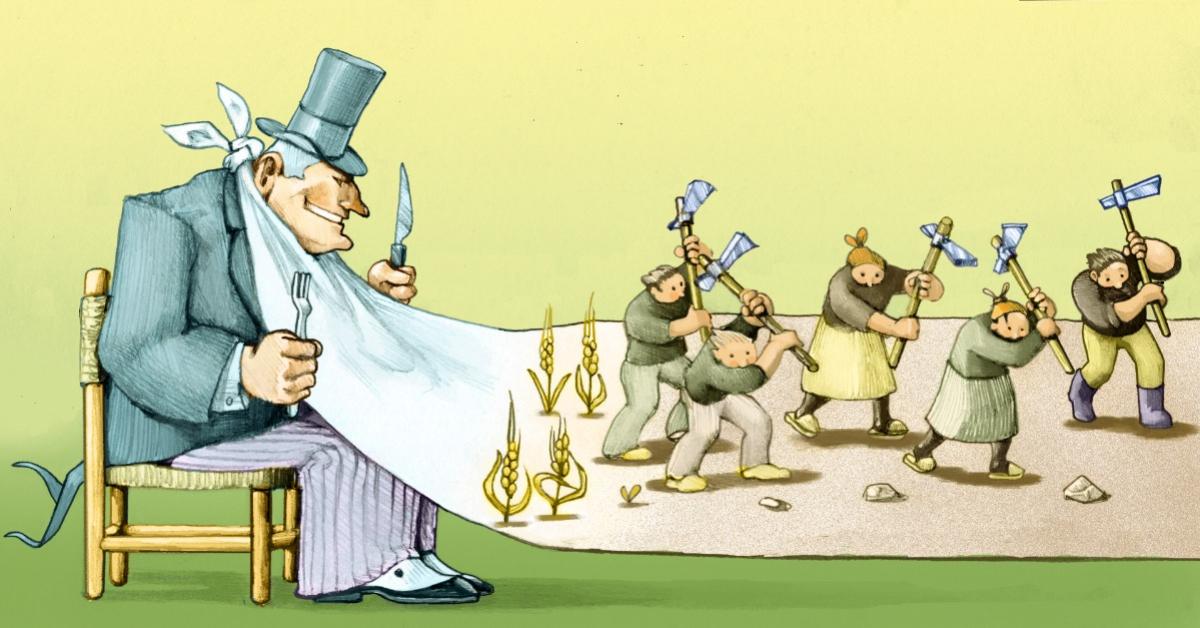
The “new history of capitalism” (NHC) continues to receive widespread acclaim despite mounting inaccuracies. Although critical reviews have punctured adherents’ arguments many still cling to wrongheaded assumptions that exaggerate the role of slavery and cotton in powering America’s economic progress. Several industries were complicit in fueling slavery, but their success was never hinged on slave production.
In fact, slavery proved to be a hindrance to commercial progress. Dependence on slavery reduced the incentive to invest in physical infrastructure and real estate development. For instance, during the apex of the canal boom in the 1830s, five times as many miles were built in the Northern as in the Southern states. Because slaves could be levied as collateral and constituted a great source of wealth, slavery succeeded in crowding out physical capital formation.
Furthermore, economic historian Gavin Wright opines that since slaves were movable personal property, owners could borrow across long distances thereby limiting opportunities to establish local credit relationships, as was customary in free states. By inhibiting the emergence of local credit networks, slavery hampered the growth of Southern finance and entrepreneurship.
Even more crucial is that the failure of planters to recruit labor from outside the South prevented the region from absorbing new human capital that could reinvigorate the economy. Unlike Northern states that allowed labor to be allocated freely, the South discouraged immigration due to its reliance on slave labor. Moreover, considering that planters did not require a highly educated labor force, the American South underinvested in education.
Planters were not inclined to employ free whites as labor, so financing public education was never a priority. In the South, just 35 percent of the region’s school-age white population were enrolled in 1860, in stark contrast to the 72 percent elsewhere—where the duration of the academic year was 70 percent longer. Northern states cultivated a more liberal environment by fostering inclusive institutions that enabled nonelites to thrive. Due to the inequalities perpetuated by slavery, slaveholding states were behind the curve in social and technological improvements that propelled economic growth.
Contrary to the claims of the NHC, slavery is a robust predictor of economic liabilities. According to researchers from the University of Michigan, slave regions in the United States had lower land values and less intensive land use. Slavery had such a pernicious effect on development, that in the relevant areas, the reduction in land value linked to slavery was greater than the value of slave wealth itself.
Other than heralding slavery as an engine of industrial progress, another dubious tactic of the NHC is to exaggerate the role of cotton in America’s development. During the antebellum era, cotton production accounted for roughly 5 percent of GDP and although it was a major export, exports never surpassed 7 percent of GDP. America had a large internal market that could generate enough domestic demand and intraregional trade to spur development.
Also amazing is that although cotton occupies an influential status in American economic history, it was not the nation’s most important crop. America’s leading agricultural commodity was corn and the South’s leading crop measured by value in 1839 and 1849 was also corn. Indeed, slaves were instrumental in cotton production, but cotton could prosper without slavery. After abolition in the American South, working-class whites easily transitioned to cotton production by acquiring postwar cotton fields.
Neither was a cotton vital node in linking industrial centers in the United States. The NHC has resurrected Douglas North’s claim that the wealth of the cotton trade stimulated demand for western produce and northeastern manufactured goods, however, this argument has been refuted by research. The American South was self-sufficient in food production and did not constitute an important market for Northern exports.
Additionally, with equal fervor, Trevor Burnard and Giorgio Riello debunk the assertion that American cotton was the fulcrum for the British industrial revolution: For Beckert, slavery and cotton are inseparable. But American cotton was not the impetus behind British industrialism. A great deal has been made of Eli Whitney’s cotton gin, which was first introduced in Georgia in 1793, but the American South became a major cotton producer only in the 1810s and retained such a position for just over a generation.
Further, comparative studies of slavery have proven that the NHC is wrong in arguing that slavery is linked to industrialization and that cotton output increased due to the use of force. According to Nuno Palma and coauthors in a 2020 paper: “Rather than promoting economic growth and development, the evidence shows that slavery held back industrialization in Brazil. We also discuss the role of slavery in agricultural productivity and show that, as in the United States, the use of violence does not explain increases in the productivity of cotton plantation.”
Like the United States, slavery in Brazil impeded industrialization, and increases in productivity were a result of biological innovations, rather than the use of torture to deter scare slaves into working. As political activism, the NHC is quite successful, but it should never be taught as history when it’s really propaganda.








